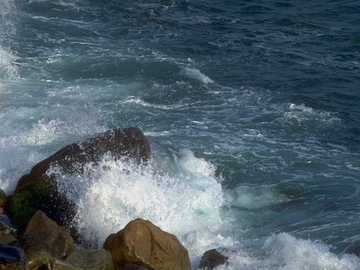

Goals:
1. Introduce students to the dangers that exist in the ocean surrounding Hawaii.
2. Connect the lesson to Chapter 5 of Blue Skin of the Sea.
Resources/Materials:
1. Internet access.
2. Internet site about moray eel: http://www.aloha.com/~lifeguards/moray.html
3. Internet site about other dangers in Hawaiian waters: http://www.aloha.com:80/~lifeguards/critters.html
4. Library access.
Time:
This lesson should take one hour.
Procedure:
1. Teacher will direct a brief discussion recalling events of Chapter 5 of Blue Skin of the Sea in which Uncle Raz's arm was bitten by a moray eel.
2. Students will explore the Internet site about the moray eel. The class will then compare the information from the Internet site to the story in a brief discussion. What facts were correctly or incorrectly portrayed in the book?
3. Students will begin exploration of next Internet site, which contains information about 18 "dangerous and venomous organisms in Hawaiian ocean waters." One of these is the moray eel.
4. Divide students into groups of two and deliver first assignment: Each group must pick one of the 17 remaining "dangerous organisms" (excluding the moray eel) and prepare a one-minute oral presentation. The teacher should enforce that each group picks a different organism.
5. The students may use the information on this Internet site for their reports, plus they must find one more source. This source can be another Internet site, a book or a magazine from the school library.
6. Students must focus on the following areas of study with their organisms: size, color, common habitat, injury mechanism and first aid treatment.
7. After 20-25 minutes of research time, the class will come back together. Before the first group presents, the teacher will deliver the second part of the assignment: Each student must submit a one-paragraph essay due the next day evaluating the most dangerous and least dangerous organism presented. The students will likely need to take notes on each presentation because they will be asked to combine opinion with supporting facts. (These paragraphs will be discussed in class the next day.)
8. The one-minute oral reports will be presented by the two-person groups and each group's notes will be handed in. These reports do not need to be written in paragraph form. Rather, the paper can consist of notes and numbers. The second source used must also be listed on the report.
Assessment:
1. Each two-person group must present and submit written information with a second source included. The teacher's evaluation will be positive/negative. (Criteria for success = satisfactory presentation, notes and a second source.) (checklist included)
2. The one-paragraph essays will be assessed by the teacher on a 10-point scale (rubric included). Students are expected to use both facts and opinion in evaluation. (Criteria for success = 8 pts. out of 10.)
Curricular strands:
1. Science: Students will learn about different organisms in the ocean.
2. Language Arts: Reading, writing and speaking about the organisms they discover.
3. Social studies: Students develop research skills.
Possible extensions:
1. An entire unit on sharks, starting with the site
http://www.aloha.com:80/~lifeguards/sharintr.html
2. Relating the dangers of Hawaiian waters to the dangers of Green Bay and Lake Michigan.
Go to Gangs
Go to Oceanic Waves
Go to Schedule of Lessons